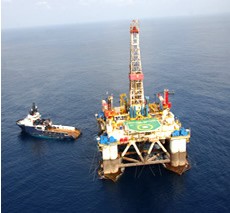“We forecast production to grow further from 136,400 barrels per day to 197,700 b/d in 2018 and 204,300 b/d in 2019 as recovering prices incentivize greater output”, it said in its country report of five Sub Saharan African countries.
It noted that oil exports and foreign direct investments is improving the country’s external position, adding “Ghana’s current account deficit will narrow in the short-term, largely due to a strong performance of oil exports. The combination of narrowing current account shortfalls and rising investment inflows will support a recovery of foreign reserves, further improving the country’s external position.”
The report further said it expects Ghana’s balance of payments dynamics to improve over the short term on the back of oil-led export growth and a favourable business environment.
Although it anticipated rising demand for consumer and capital goods imports, a robust expansion in Ghana’s exports, especially its oil exports as several new fields come online, it emphasized will see the overall goods trade balance shift into a surplus for the first time in over two decades.
This is expected to see Ghana’s current account deficit narrow from an estimated 2.9 percent of GDP in 2017 to 1.4 percent in 2018 and 1.6 percent in 2019. Moreover, increased oil prices and Ghana’s favorable business environment will see foreign direct investment remain robust, while the country’s high real interest rates compared to developed markets will help stimulate short-term capital inflows.
…Imports will remain robust
The report explained that goods and services imports are set for continued growth, driven higher by consumer and capital good demand, adding “Imports of capital goods for construction projects and the further development of major oil fields will continue. At the same time, monetary easing to stimulate the lagging non-oil economy will contribute to growing consumer import demand.”
Meanwhile, Ghana’s other major commodity exports will see more mixed developments in coming years. Gold made up 41.6 percent of exports in 2016 as oil prices bottomed out.
“Although we expect the price of gold to rise from US$1,259.0 per ounce in 2017 to US$1,325.0 per ounce in 2019 while output sees moderate growth, we note that a crackdown on illegal gold mining, which has risen sharply as a share of the total in recent years, may interrupt extraction and trade flows.”
Regarding cocoa, the report said export volumes will remain relatively robust. “However, we have downgraded our price forecasts , and also see the illegal mining of gold presenting a downside risk to output, as unsanctioned excavations often take place in areas around

 Ghana’s oil production is expected to hit 204,300 barrels per day in 2019 as recovering prices incentivize greater output.
Ghana’s oil production is expected to hit 204,300 barrels per day in 2019 as recovering prices incentivize greater output.

